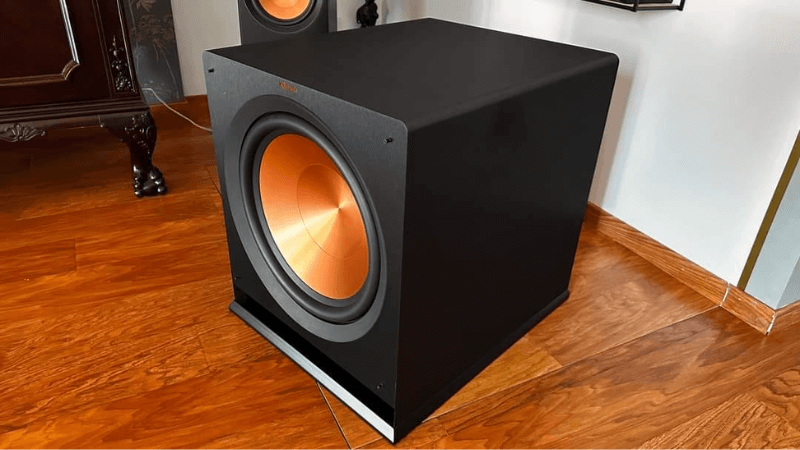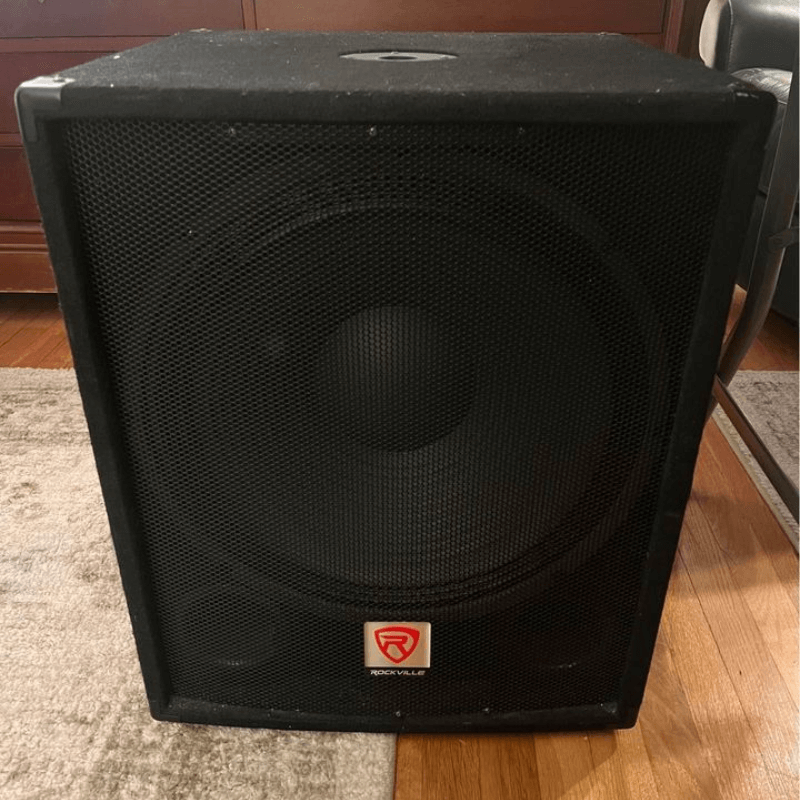Did you know a subwoofer is a type of speaker that focuses on reproducing the lower frequencies (bass and sub-bass)? While regular speakers can produce bass frequencies, a subwoofer does it much better when you can feel the sound.
When choosing a subwoofer, there are different things you need to consider. The sound quality, size of the subwoofer, subwoofer type (active vs. passive), connectivity (wired vs. wireless), cabinet design, and more. In this article, we’ll explore active and passive subwoofers to help you make an informed decision.
Active Subwoofers Explained
Active subwoofers, also known as powered, have grown and become popular in recent years. This is because they are easy to set up, even for a beginner with not much knowledge of audio. These days, active subwoofers have become so much more common for home theater systems.

The Majestic Klipsch R-115sw Active Subwoofer
An active subwoofer is a subwoofer with an in-built amplifier. A powered subwoofer can be classified as a passive subwoofer without an amplifier. Including an amp in active subwoofers makes it a breeze to set up. The amp sufficiently powers the subwoofer, and other features, such as crossover circuits, make its performance to be optimal.
Although they are easy to set up, active subwoofers are typically more expensive than passive ones. The built-in amplifier and other components also make their size to be bigger and bulkier, which will require more space.
Passive Subwoofers Explained
A passive subwoofer does not include an inbuilt amplifier in its design. This means to use a passive subwoofer, you’ll require an external amplifier or AV receiver that will power it and your speakers sufficiently.
For beginners, connecting a passive subwoofer to your system is not as easy as just plugging the wires. You’ll need to make sure the amplifier or AV receiver used is correctly matched to the sub. Correctly matching the subwoofer to the AMP/AV receiver means it will power the sub sufficiently to ensure it sustains the bass effects without overpowering it.

Rockville SBG1188 Passive Sub
When you get everything right, a passive subwoofer will be a better option because you can customize it your match your system. Choosing a passive subwoofer also saves you money because they are cheaper. The design is also smaller, which is good if you have a smaller-sized room.
However, keep in mind that you cannot use the LFE audio output port with your subwoofer from your home theater processor. If you decide to go this route, you must buy a power amplifier to power your passive subwoofer. If you already have a power amplifier or AV receiver, you’re good to go.
Differences Between Active & Passive Subwoofers
The major difference between active and passive amplifiers is the in-built amp you’ll get with powered subwoofers. As earlier said, you’ll require an external amplifier if you decide to use a passive subwoofer.
The sound quality from a powered subwoofer is deeper, and the bass is more impactful. This is because the in-built amplifier is optimally configured to handle the sub properly. With passive subwoofers, you can get better-quality low-end frequencies. However, it takes more work and experience to configure the amp to your sub properly.
Which Should You Choose?
- If you already have a home theater setup in your home, going with an active or powered subwoofer is the best choice. This makes it very easy to connect the subwoofer to your home theater using only a single cable (LFE Output) or wirelessly if your home theater system supports it.
- For a custom audio setup, a passive subwoofer is the best option. However, you’ll need a powerful amp that will efficiently power both the sub and your speakers.